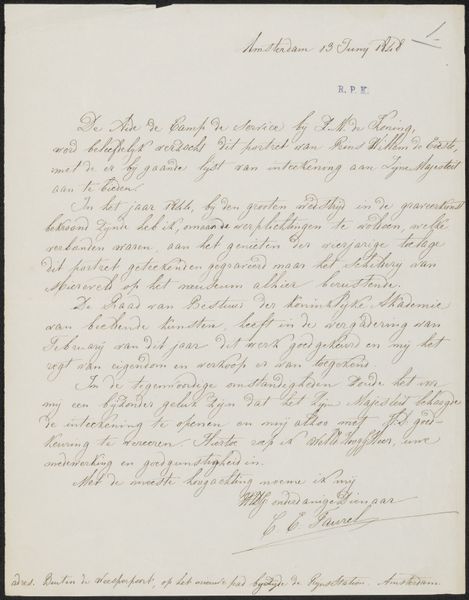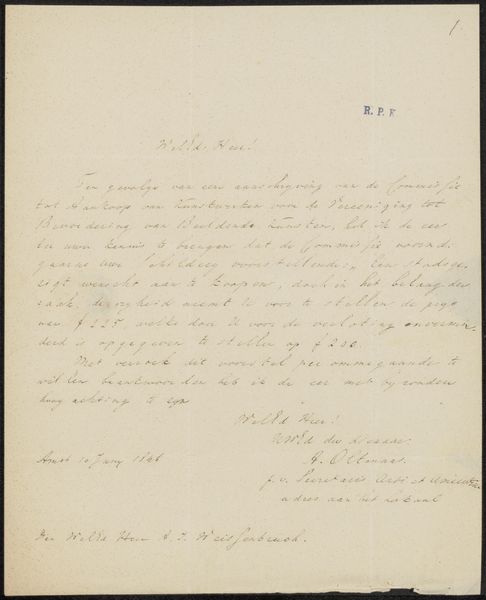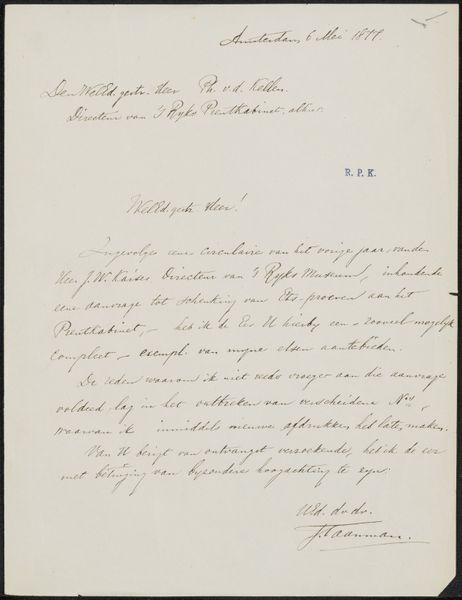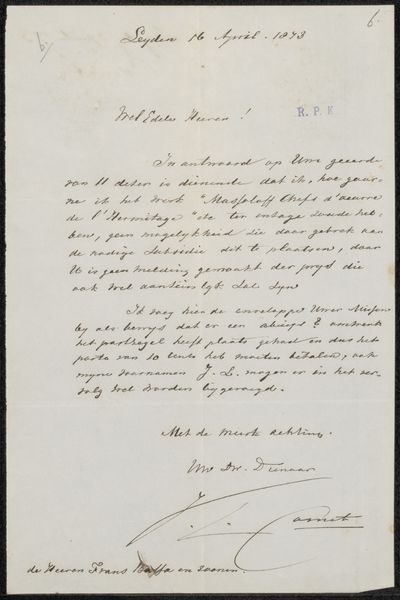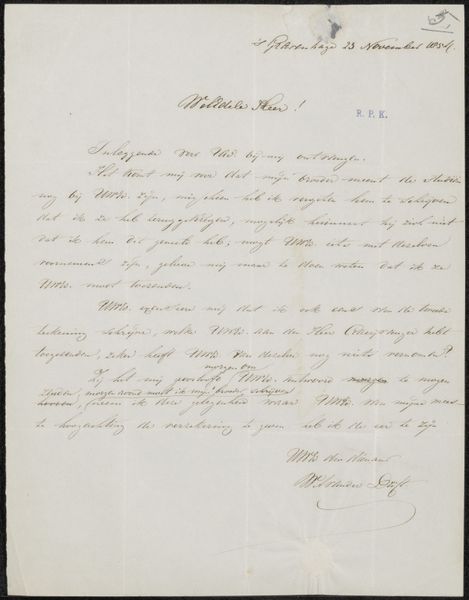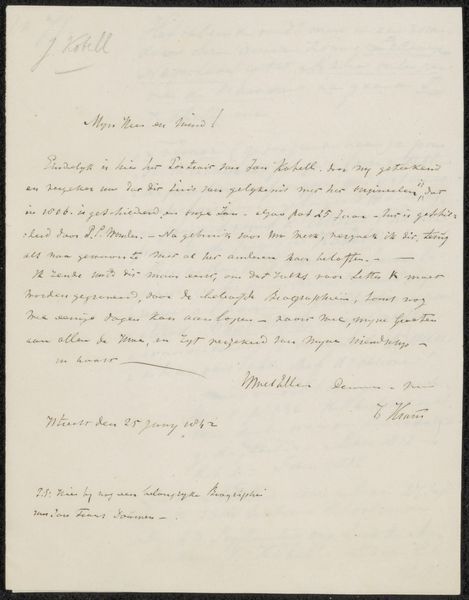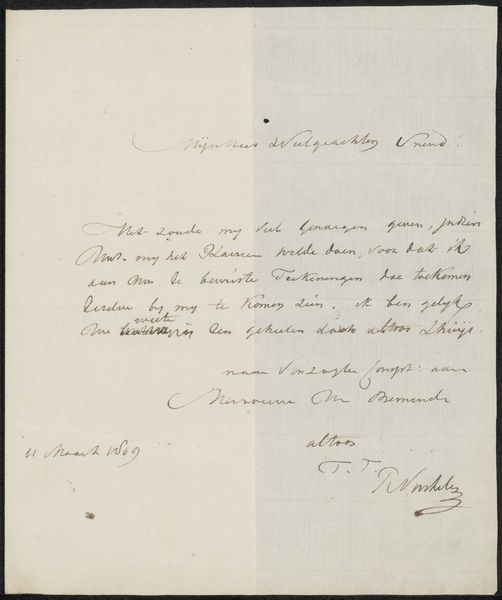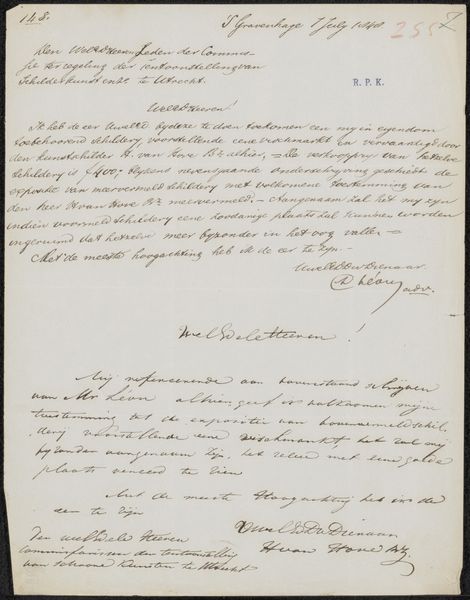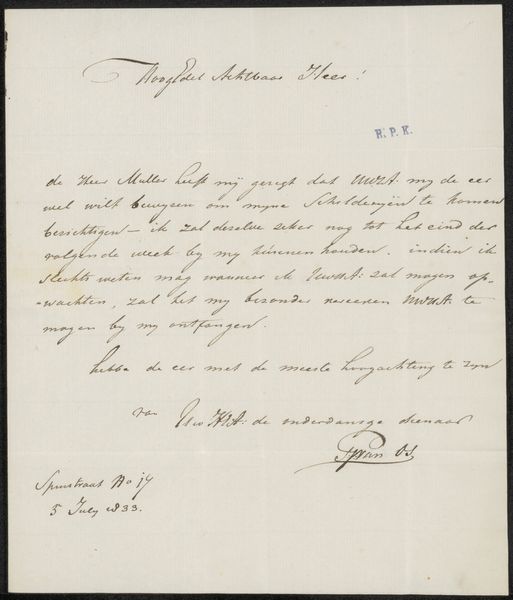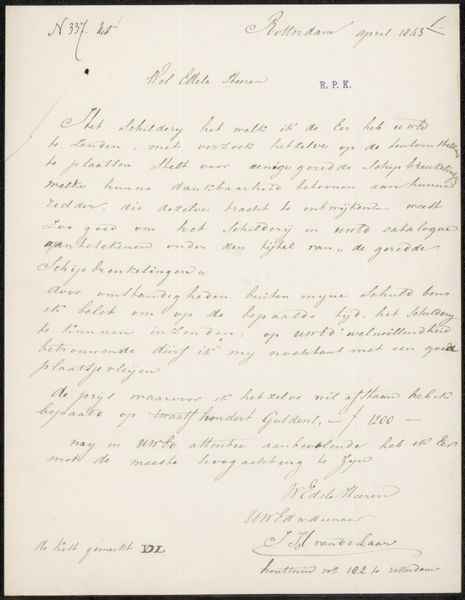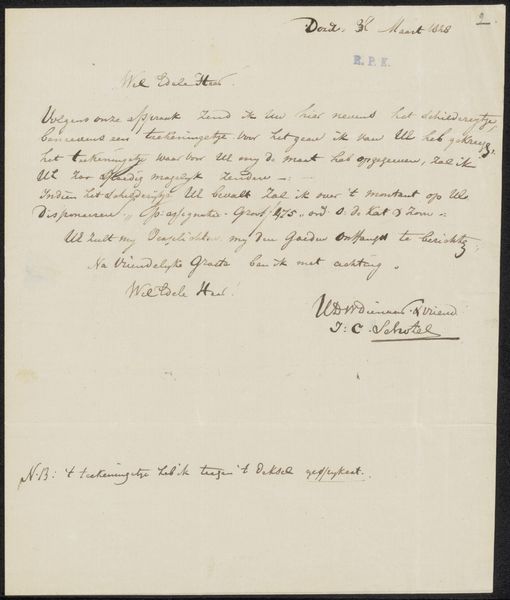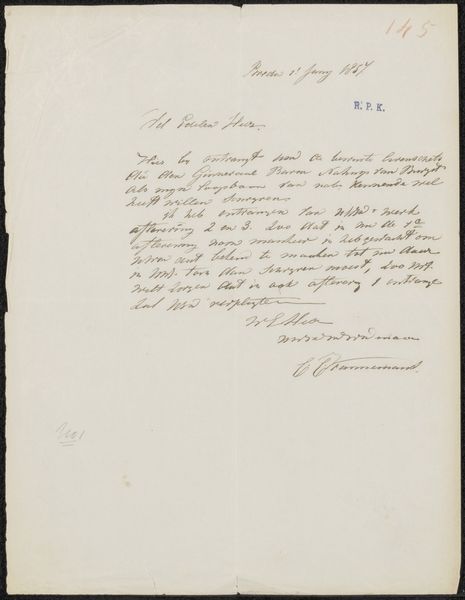
drawing, paper, ink, architecture
#
portrait
#
drawing
#
paper
#
ink
#
architecture
Copyright: Rijks Museum: Open Domain
Curator: Here we have "Brief aan Christiaan Kramm," which translates to "Letter to Christiaan Kramm." This ink drawing on paper, potentially from 1845, is attributed to Isaac Warnsinck. What are your initial thoughts on seeing this piece? Editor: Well, right away I'm struck by its fragility, it feels ephemeral. It’s just ink on paper, a faded script, so incredibly intimate like stumbling on someone else's private thought stream, like seeing a fragment of an idea floating on a stream and only getting to grab a piece before it dissolves. Curator: Absolutely, that intimacy is key. Letters, as a form, are vessels carrying the sender’s intent and cultural values to another party. The image’s strength as a piece is in how it evokes questions. Editor: Questions indeed. There’s a palpable sense of urgency here. I mean, look at that hurried script; those tight, almost claustrophobic lines. I feel like it is telling me how precious language could be; that it might be the only thing carrying ideas. Like in Fahrenheit 451 with their stories told on delicate sheets. Curator: Notice how Warnsinck uses calligraphy, which itself functions as art and adds a feeling of ceremony, although the gesture remains intimate and quite hurried. The symbol of writing here really functions as architectural device. In this letter form and within this period. It seems to function almost as if an instruction set is encoded into a set of building schematics. Editor: An interesting observation. Now I am not thinking of whispers but maps and how language is supposed to stand in as representative for territories or strategies. Like diagrams but also a hidden desire for a response, right? Like building an idea together. I feel that. Curator: Yes, there’s an invitation embedded in the form. Thinking about Warnsinck, the letter format carries a memory. The memory of an intention to connect, in an architectural sense—structuring one’s argument but, in our case as the observer of the letter, an invitation to ponder human interaction in the 19th century. Editor: What I carry away is that what could seem like discarded thoughts still carry the potential to structure one’s memory—or create new forms. Pretty inspiring, actually.
Comments
No comments
Be the first to comment and join the conversation on the ultimate creative platform.
